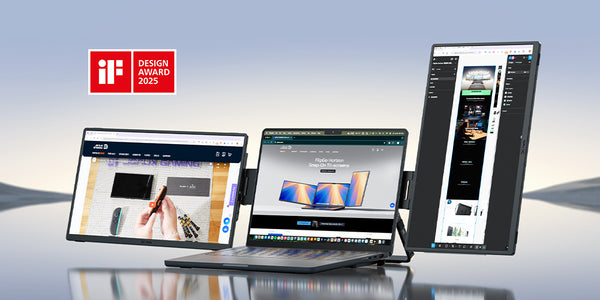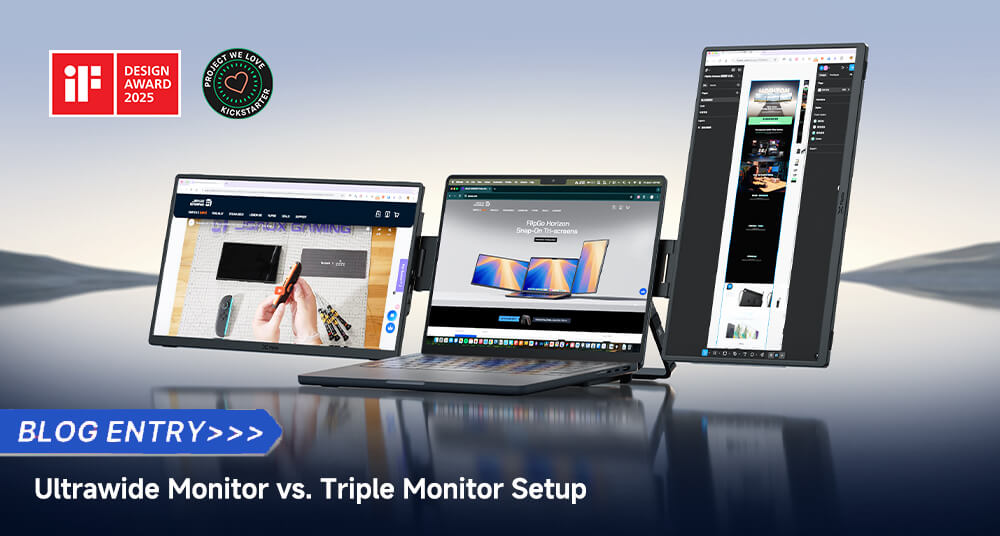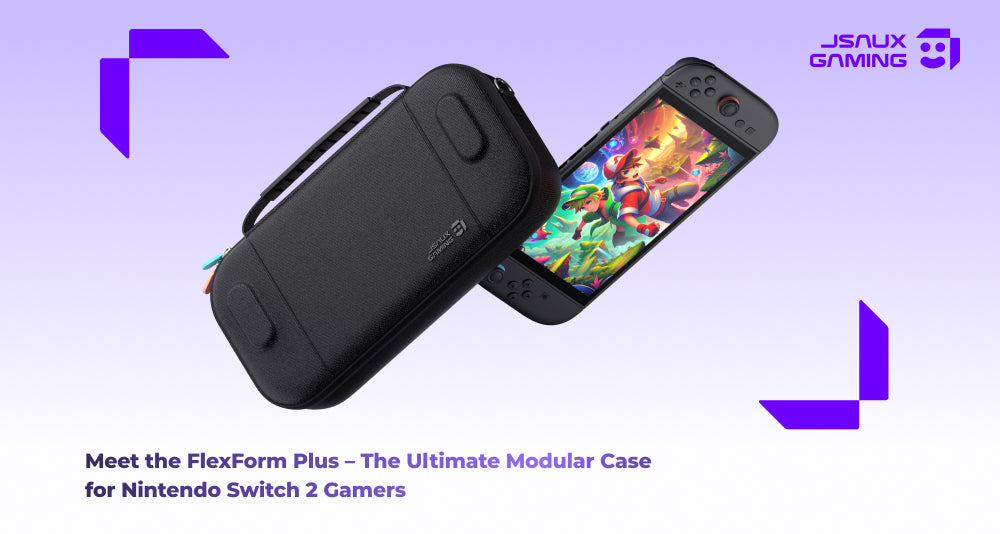Screens are everywhere—whether you’re working, gaming, or just enjoying some time off watching your favourite movies and TV shows. That’s why screen space can make a significant difference in how efficiently and comfortably we work or relax. Nowadays, you have two main options when looking to expand your digital workspace: ultrawide monitors or multiple monitor setups. In this article, we’ll focus on the three-monitor setup, as it’s one of the most popular choices when adding more than one screen to your workspace.
While each configuration offers a distinct experience—ultrawides provide a wide, seamless canvas with minimal clutter, while triple monitors maximize screen space through multiple displays that can be tailored to specific workflows—it’s important to understand the pros and cons of each, especially in terms of key features.
In this text, we’ll focus on five aspects: workflow flexibility, portability, ease of connectivity, display quality, and compatibility (aka multi-device support). Let’s go!
1. Workflow Flexibility
Ultrawide monitor: These monitors are designed for fixed desktop setups, which often means limited viewing angles. Window management depends largely on your CPU’s capabilities, though you can always place different apps along the screen to maximize space. Ultrawides are ideal for video editing, large spreadsheets, and supported video games.
Three-screen setup: You can independently adjust and rotate each screen—such as with the FlipGo Horizon—making them perfect for multitasking and heavy workflows like video editing, data analysis, or customer support. This setup also lets you mix and match screen sizes and orientations (e.g., two landscape and one portrait), allowing you to tailor your workspace for design, finance, or research tasks.
2. Portability
Ultrawide monitor: These are not portable. Most models are over 30 inches and relatively heavy. Designed to remain on your desktop, they’re only moved for maintenance or replacement. Their large size also requires ample desk depth, which can be an issue in compact workspaces.
Three-screen setup: Setups like the FlipGo Horizon can fold down to the size of a laptop, meaning you can carry them in a backpack. This allows you to take your office anywhere—cafés, meeting rooms, or airport lounges.
3. Ease of Connectivity
Ultrawide monitor: These require external power and an HDMI or DisplayPort connection, adding clutter to your workspace. When you add your computer’s power source and other cables (ethernet, peripherals, etc.), your desk can quickly become crowded.
Three-screen setup: Thanks to solutions like the SnapStandPro included in the FlipGo Horizon, you only need one USB-C cable to connect your laptop to two additional screens. You can also expand connectivity (USB-A, ethernet, additional USB-C ports) via a docking station—while using minimal space.
4. Display Quality
Ultrawide monitors: These offer good color consistency and are excellent for horizontal content. However, their vertical height is usually similar to a standard 27-inch display, which isn’t ideal for vertically scrolling content. For programmers, writers, or editors, this means more scrolling and less visible information per page. Stacking multiple long documents vertically is also less practical.
Three-screen setup: The FlipGo Horizon Pro 144Hz version offers 100% sRGB color gamut and 400 nits of brightness, making it ideal for outdoor work or bright environments. Triple-monitor setups also allow you to adjust screen orientation for your exact needs—perfect for design, research, or financial workflows.
5. Compatibility & Multi-Device Support
Ultrawide monitor: While these often include multiple HDMI ports, they typically support only one computer at a time. Connecting multiple devices usually means more cables and complexity, making switching between them inconvenient.
Three-screen setup: The FlipGo Horizon works seamlessly with both macOS and Windows via a single USB-C connection. Additionally, it supports handheld gaming consoles like the Nintendo Switch (1 & 2), Steam Deck, and similar devices, offering maximum versatility.
Considering all options, three-screen setups offer great versatility, portability, and are easier to set up than ultrawide monitors and you can grab them at a fraction of its cost. More interesting is the fact that the FlipGo Horizon’s Kickstarter campaign is about to end (it will be over on July 27), so now is the perfect time to grab your unit for a special $399 price.
Have a great day,
The JSAUX team

















![#style_[2-pack] for all rog ally models](http://jsaux.com/cdn/shop/files/GP0113A-Anti-Glare-Screen-Protector-for-ROG-Ally-_-ROG-Xbox-Ally-Series-1_jpg.png?v=1762310072&width=92)









![#style_blue&orange [2-pack]](http://jsaux.com/cdn/shop/files/90_-USB-C-to-USB-C-Right-Angle-Adapter-blue-orange-1.png?v=1755238920&width=92)





















Leave a comment
All comments are moderated before being published.
This site is protected by hCaptcha and the hCaptcha Privacy Policy and Terms of Service apply.